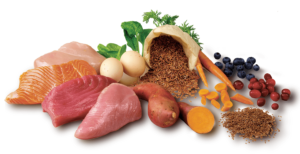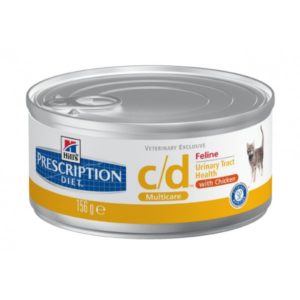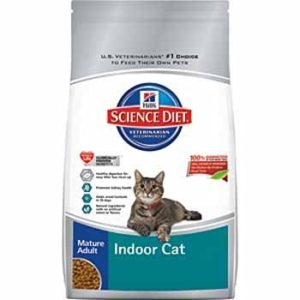Hill’s Science Diet and Royal Canin Cat Food Ingredients Deceive Pet Parents

Trusted cat food brands deceive cat owners
Follow the money trail
For years whenever I took my cats to the vet I wouldn’t even give a second thought to all the cat food for sale there. Trusted brands stand out like Hill’s Science Diet and Royal Canin. From a retailer’s perspective it’s opportunistic and convenient for the consumer/pet parent. After all, if my vet recommends it why make an extra trip to the pet food store? Years ago when I started taking a fresh look at the relationships between major corporations and the influence they wield over consumers, lawmakers, and regulators, let’s just say the rose-colored glasses came off. It’s easy to become angry when you finally realize how daunting the money trail is.
Knowing what I’ve learned over the past several years about the dark side of the pet food industry it’s no surprise at all to see how certain pet food companies have made alliances with veterinarian professionals. These companies, along with pharmaceutical companies, wield incredible influence on the curriculum taught at vet schools, too. In the end it’s all about business. It saddens me that the irony hasn’t struck the majority of cat parents out there.
Cat food: fresh or fake?

A blend of fresh ingredients used in cat food
If you were to take a look at the ingredients label of the food that line the shelves of your vet’s clinic, it may sound like the very same ingredients you have in your pantry or refrigerator! After all, what’s more wholesome than real chicken, rice, sweet potatoes, corn, wheat, peas, carrots, cranberries and blueberries? However, we’re not that stupid. Upon opening the bag, we know we’re not going to find fresh carrots, celery, blueberries, cranberries, etc. We’re going to find hard, crunchy, smelly kibble or pate’ of some kind that no longer resembles the beautiful pictures on the outside of the bag.
Would it surprise you to find out that many of the first five to seven ingredients on the label comprise of ingredients that cats’ bodies are not designed to eat, much less digest? Would it also strike you as ironic that these same ingredients are linked to the very diseases (cancer, diabetes, obesity, kidney failure, IBD) that your veterinarian is diagnosing and treating your cat for? I find it very hard to believe that vets don’t see the connection. Fortunately, some are waking up. Finding these kind of products, including prescription diets, for sale in vet clinics gives the impression they will make our cats healthy, and this is misleading. The integrative veterinarian clinic I go to now has a couple of freezers in their lobby with raw, frozen pet food! Wow! Even though it also sells Royal Canin and Science Diet products that’s a big step in the right direction!
“Sick Care”
We know as humans that if we eat a diet of processed food, junk food, sweets, trans fats, soda, etc, it’s going to eventually affect our health for the worse. Health care is a huge industry! I always like to call it “sick care” because if people were to ever become truly healthy we would put the drug and medical companies and doctor’s offices out of business. To be healthy as humans eating a diet loaded with fresh vegetables, fruit, grass-fed meats and dairy, drinking lots of water, and getting plenty of exercise is the path to being healthy. The same goes for our cats! Their bodies will thrive and be healthy if fed a fresh, biologically appropriate diet. This could include raw food or home-cooked, balanced diets. It includes eating foods that are human grade approved, not “feed grade” approved. Oh yes, there’s a difference! Feed grade food is not fit for human consumption; it’s approved for feeding animals, and according to Susan Thixton, The Truth About Pet Food, dead/non-slaughtered animals or diseased animals are allowed to be processed into pet food legally because these are suitable for use in pet “feed.” Furthermore, feed grade ingredients are not required to be delivered to the manufacturer in clean, refrigerated trucks. It’s most likely being delivered by a dump truck. The long term effects on our pets’ health of this practice hasn’t been determined.
A closer look at cat food ingredients

Science Diet Urinary Tract Health cat food

Science Diet Indoor Cat kibble
Taking a closer look at cat food not only brings into question the source of the ingredients, but many of the ingredients are not even biologically appropriate to begin with. (For more information on optimal nutrition for cats, see this page.) Cats are carnivores and are not designed to eat carbohydrate-based foods. This includes corn, wheat, soy, rice, wheat gluten, legumes and potato. Yet that’s what pet food manufacturers use to create filler and to bind all the ingredients of kibble together in the baking/heating process of manufacturing. They also include ingredients like soybean oil, powdered cellulose (saw dust), and added “flavors” that are nothing more than chemicals designed to taste like a “real” ingredient. The end result resembles nothing whatsoever the beautiful pictures of fruits, vegetables, and meats on the package!
So the next time you’re at the vet’s office I challenge you to look at the cat food products on the shelves; read the ingredients on the label. Is it being stored in a refrigerator, a freezer, or room temperature? Does the label claim to have human grade food? Susan Thixton also makes a very interesting observation worth noting:
…human grade claims on a pet food website is not verified information. Regulatory authorities do not scrutinize pet food websites (they should, they are considered an extension of the label – but they don’t over see claims on websites). Ignore pictures and claims of quality on pet food websites. On the other hand, consumers can trust the claim of human grade on a pet food label has been verified. One of the few things that regulatory authorities take seriously is a human grade claim on a pet food label – each pet food that makes this claim on their label is required to prove to the regulatory authority the pet food meets all of the legal requirements of human grade. Labels you can trust (just the words…not the pictures), websites you cannot.
Conflict of interest
Make no mistake about it: the diet we feed our cats has a direct correlation to their health. It’s time to stop giving credence and putting your trust in brands like Hill’s Science Diet and Royal Canin that claim their products produce healthier pets. The reality is these companies and veterinary clinics that sell their pet food have a mutually beneficial relationship, one that contributes to the diseases and illnesses that bring pets through the door to begin with. I call it a conflict of interest.😾

